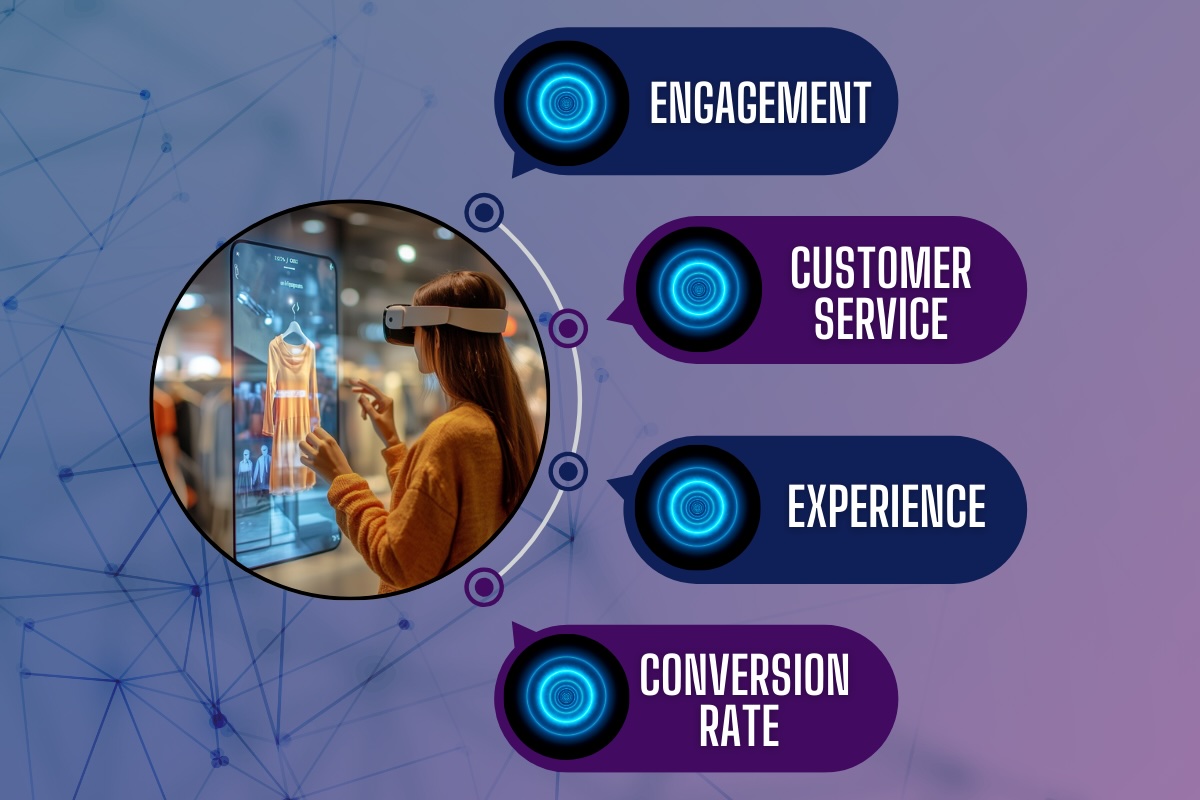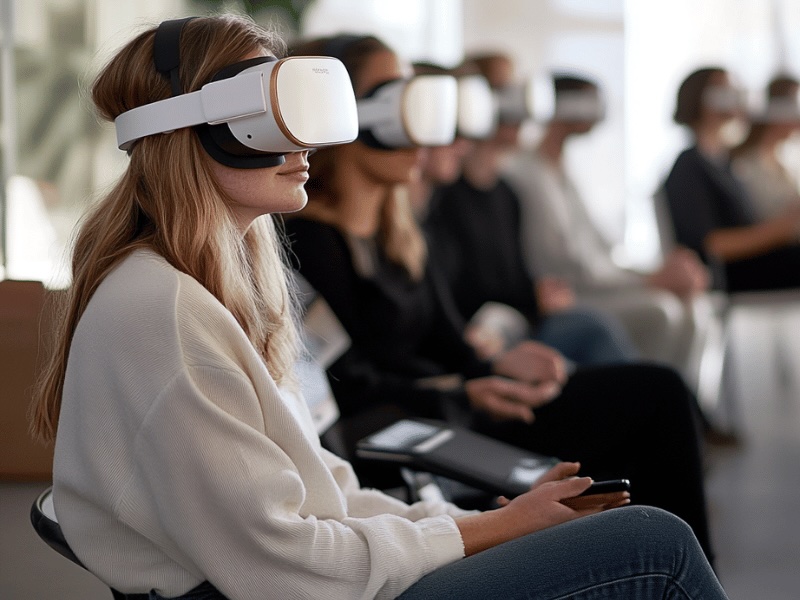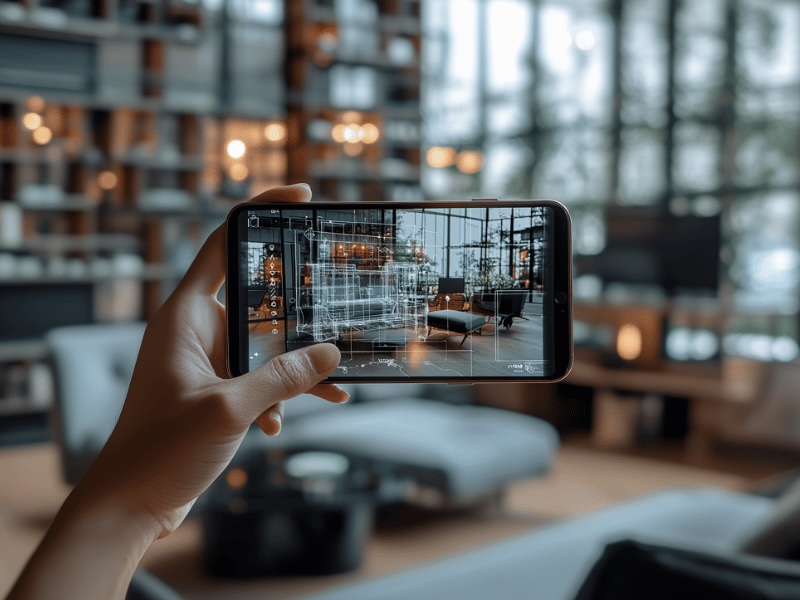In 2025, augmented reality (AR) isn’t just a buzzword—it’s business-critical. What began as a novelty in gaming and entertainment has matured into a practical tool that’s driving serious results across industries.
Whether you’re designing smarter workflows, reducing product returns, or creating immersive customer experiences, AR is no longer “the future”—it’s the present.
From product design studios to global retailers, teams are turning to AR to bridge the gap between digital potential and real-world performance. It’s improving safety on manufacturing floors, transforming healthcare training, and giving eCommerce customers the power to try before they buy.
In this updated guide, we’ll break down what makes AR so effective—across manufacturing, marketing, education, and beyond. You’ll learn how AR adds value, why adoption is growing, and how to future-proof your business by integrating this tech into your digital strategy.
Want to see how we bring products to life with? Check out our AR product rendering services.
Key Takeaways
- AR improves customer interaction and brand engagement
- It’s making operations in manufacturing safer and more efficient
- Marketers use AR to create immersive, memorable content
- Healthcare and education benefit from visual learning and simulation
- AR adoption is growing, making it a vital investment for modern brands
What is Augmented Reality?

Augmented reality (AR) is a technology that enhances your view of the real world by overlaying digital content—like images, instructions, animations, or data—onto physical surroundings.
Unlike virtual reality (VR), which replaces the physical environment entirely, AR works alongside it. That makes it ideal for hands-on applications like product previews, assembly instructions, or real-time diagnostics.
In 2025, AR is more accessible than ever. What once required expensive headsets now runs smoothly on smartphones, tablets, and web browsers. This shift has opened the door for creative use cases across retail, manufacturing, healthcare, and education.
See Microsoft’s guide to what augmented reality is.
Benefits of Augmented Reality Across Industries

AR isn’t limited to one sector. Its ability to blend digital content with the physical world makes it incredibly versatile—and valuable. Here’s how industries are using AR to solve real problems and create better experiences:
1. Customer Engagement That Feels Personal
AR gives customers the power to interact with your product in their space. Whether it’s trying on glasses or placing a virtual sofa in their living room, this hands-on preview builds confidence and boosts conversion rates.
2. Real-Time Data and Instructions
In manufacturing and logistics, AR overlays instructions or metrics directly onto equipment. Workers can follow complex tasks with fewer errors—no need to reference a manual or screen elsewhere.
3. Hands-Free Operation
With AR glasses or tablets mounted for hands-free use, teams in the field—like engineers or healthcare workers—can access critical data without pausing the job at hand. It improves both speed and safety.
4. More Personalized Marketing
AR lets brands create interactive ads, gamified experiences, or product demos that react to the user’s input. It’s not just content—it’s content that responds.
5. Faster Visual Decision-Making
In product development or home improvement, AR lets users visualize options instantly—reducing delays, indecision, and returns.
Want more use-case ideas? See Circuit Streams overview of examples of AR applications.
Benefits of Augmented Reality in Manufacturing

While AR is often associated with consumer tech, some of its most transformative results are happening behind the scenes—in factories, warehouses, and engineering labs.
Step-by-Step Assembly
AR can guide workers through complex builds with real-time, visual instructions overlaid onto machinery. This reduces reliance on training manuals and speeds up onboarding for new hires.
Predictive Maintenance
Technicians can use AR to see diagnostics in context—right on the equipment—before something breaks down. This minimizes downtime and extends equipment lifespan.
Quality Control in Real Time
AR systems can flag deviations or mistakes during the assembly process by comparing the live object to the ideal 3D model. This leads to less waste and higher precision.
Safer Workflows
AR can signal warnings, visualize hazards, or guide users through emergency protocols. For example, a headset could alert a technician if a surface is too hot to touch or a valve has been improperly sealed.
Remote Expert Support
An offsite engineer can “see” what a technician sees through AR and guide them through repairs or inspections without flying in—saving time and cost.
See how we help manufacturers accelerate product rollout: How 3D Rendering Can Reduce Time to Market for Industrial Products.
AR for Marketing and Retail: More Than a Gimmick

Augmented reality has moved beyond novelty in the retail world. It’s now a proven way to boost sales, lower returns, and deepen brand engagement—especially in industries where seeing is believing.
Virtual Try-Ons
From sunglasses to sofas, AR lets consumers “try before they buy” using only a phone. They can see how a product looks in their space or on their body—reducing uncertainty and building confidence.
Product Visualization
Retailers are using AR to bring static product pages to life. Instead of scrolling through photos, customers can rotate, scale, and explore 3D versions of products in their environment. Learn what 3D product rendering is.
Interactive Packaging
AR-enabled packaging lets customers scan a product and unlock bonus content—tutorials, recipes, brand stories, or exclusive offers. It turns your packaging into a marketing channel.
AR Showrooms
Some brands are skipping physical showrooms altogether. With AR, you can showcase an entire collection virtually, anywhere your customer has internet access. This lowers overhead while widening reach.
AR in E-Commerce: Driving Better Product Experiences

In online retail, the lack of physical interaction is often the biggest barrier to purchase. Augmented reality is helping to change that—bridging the digital and physical divide with immersive, informative shopping experiences.
Want deeper insights? Check out our Ultimate Guide to 3D eCommerce.
Try-Before-You-Buy
AR lets users see how a product fits into their life—literally. Whether it’s visualizing a lamp on a bedside table or testing how sneakers look on their feet, customers can make more confident decisions without visiting a store.
Product Exploration
Interactive AR elements like 360° views and life-size scaling help customers understand the true look and feel of a product. It’s particularly effective in categories like homeware, fashion, and consumer tech.
Impact on Returns
By providing clarity upfront, AR reduces buyer’s remorse—and return rates. When people know what to expect, they’re far more likely to be satisfied with their purchase.
Want to see how visual content can simplify complex ideas? Explore our product rendering process.
According to a Shopify report on AR in eCommerce, brands using AR can see up to 94% higher conversion rates than those who don’t.
Advantages of AR in Healthcare and Education

Augmented reality is revolutionizing how professionals learn, train, and deliver services—especially in high-stakes industries like healthcare and education.
Healthcare: Training & Treatment
In surgical settings, AR helps doctors visualize a patient’s anatomy in real-time, overlaying critical data during procedures. This leads to improved precision and reduced risk.
Medical students also benefit from AR-based simulations that offer immersive, repeatable practice without needing a live patient.
Patient Education
AR helps patients understand diagnoses and treatment plans. Visualizations of internal organs or procedures help simplify complex information, leading to better engagement and adherence.
Education: Beyond Textbooks
AR in classrooms brings subjects to life—letting students interact with 3D models of planets, historical sites, or biological systems. This hands-on, visual learning approach helps boost comprehension and retention.
Remote Learning & Training
As remote education becomes more common, AR adds a layer of interactivity that traditional video calls lack. Whether it’s corporate training or K–12 education, AR keeps learners engaged from any location.
Want to see how visual content can simplify complex ideas? Explore our product rendering process.
AR Challenges and the Future Ahead

While the benefits of augmented reality are clear, no emerging technology comes without hurdles. Understanding these challenges helps businesses prepare for smarter integration.
Hardware and Accessibility
AR still relies on capable hardware—mainly smartphones and tablets today. Wearables like AR glasses are gaining ground, but cost and availability can limit reach. As devices become more affordable and widespread, expect adoption to accelerate.
Development Costs
High-quality AR experiences require specialized skills in 3D design, programming, and UX. Custom development can be expensive, especially for small businesses. However, platforms like WebAR and toolkits like Unity and 8thWall are making it easier to get started without heavy investment.
User Adoption
Some consumers still find AR novel or intimidating. Adoption varies by demographic and industry, but as brands make AR more intuitive and valuable, usage continues to grow—especially among younger, mobile-first audiences.
Data and Privacy Concerns
As AR applications gather spatial and behavioral data, privacy becomes a critical concern. Clear permissions, ethical design, and compliance with data regulations are essential to building trust.
The Road Ahead
AR is expected to evolve rapidly through AI integration, real-time personalization, and hardware improvements. As Apple, Meta, and Google continue to invest heavily in spatial computing, AR will shift from a “nice-to-have” to a baseline feature of digital experiences.
AR isn’t a gimmick—it’s a tool with growing strategic value. Brands that invest now will be better positioned as consumer expectations continue to shift toward immersive, interactive digital experiences.
FAQs
Augmented reality is successful because it seamlessly blends the digital and physical worlds, offering immersive, interactive experiences that engage users on a deeper level. Its success is driven by its versatility across various industries—whether it’s enhancing shopping experiences in retail, improving learning outcomes in education, or providing real-time support in manufacturing. AR’s ability to provide practical solutions, such as virtual try-ons and interactive product demonstrations, makes it an invaluable tool for businesses looking to innovate and connect with their audiences in new and meaningful ways.
The impact of augmented reality is profound, transforming how businesses operate and how consumers interact with products and services. AR enhances customer engagement, drives higher conversion rates, and reduces return rates in eCommerce by allowing customers to make more informed purchasing decisions. In healthcare, it improves surgical precision and medical training, while in education, it makes learning more interactive and effective. The widespread adoption of AR is also driving market growth, with industries across the board increasingly integrating AR into their strategies to stay competitive.
The power of augmented reality lies in its ability to create immersive, interactive experiences that bridge the gap between the digital and physical worlds. AR has the unique capability to enhance reality by overlaying digital information onto real-world environments, making it a powerful tool for visualization, communication, and problem-solving. This power is particularly evident in its ability to engage users in ways that traditional media cannot, making AR an essential component of modern marketing, education, and professional training.
Augmented reality solves a variety of problems across different industries. In retail, it addresses the challenge of online shopping by allowing customers to virtually try products before purchasing, reducing uncertainty and return rates. In healthcare, AR helps surgeons visualize complex procedures and provides trainees with immersive, hands-on learning experiences. In manufacturing, AR improves efficiency and accuracy by guiding workers through complex tasks with real-time information. Additionally, AR enhances remote collaboration, making it easier for teams to work together across different locations. Overall, AR provides practical solutions that improve user experience, operational efficiency, and decision-making processes.
Augmented reality improves customer engagement, supports better product decision-making, enhances learning experiences, and boosts operational efficiency across industries like retail, healthcare, and manufacturing.
AR overlays digital content onto the real world, enhancing your environment. VR, on the other hand, immerses users in a completely virtual environment, replacing the real world entirely.
Absolutely. AR gives online shoppers the ability to see how products look or fit in real-world contexts—leading to higher confidence, lower return rates, and increased conversion.
Bring Your Vision to Life with AR Product Rendering
Augmented reality is helping businesses elevate how they design, demonstrate, and deliver products—but none of it works without great visuals. If you’re ready to show off your product in its best light and reduce time to market, we can help.
Explore our AR Product Rendering Services and discover how photorealistic visuals can transform your sales and storytelling.







